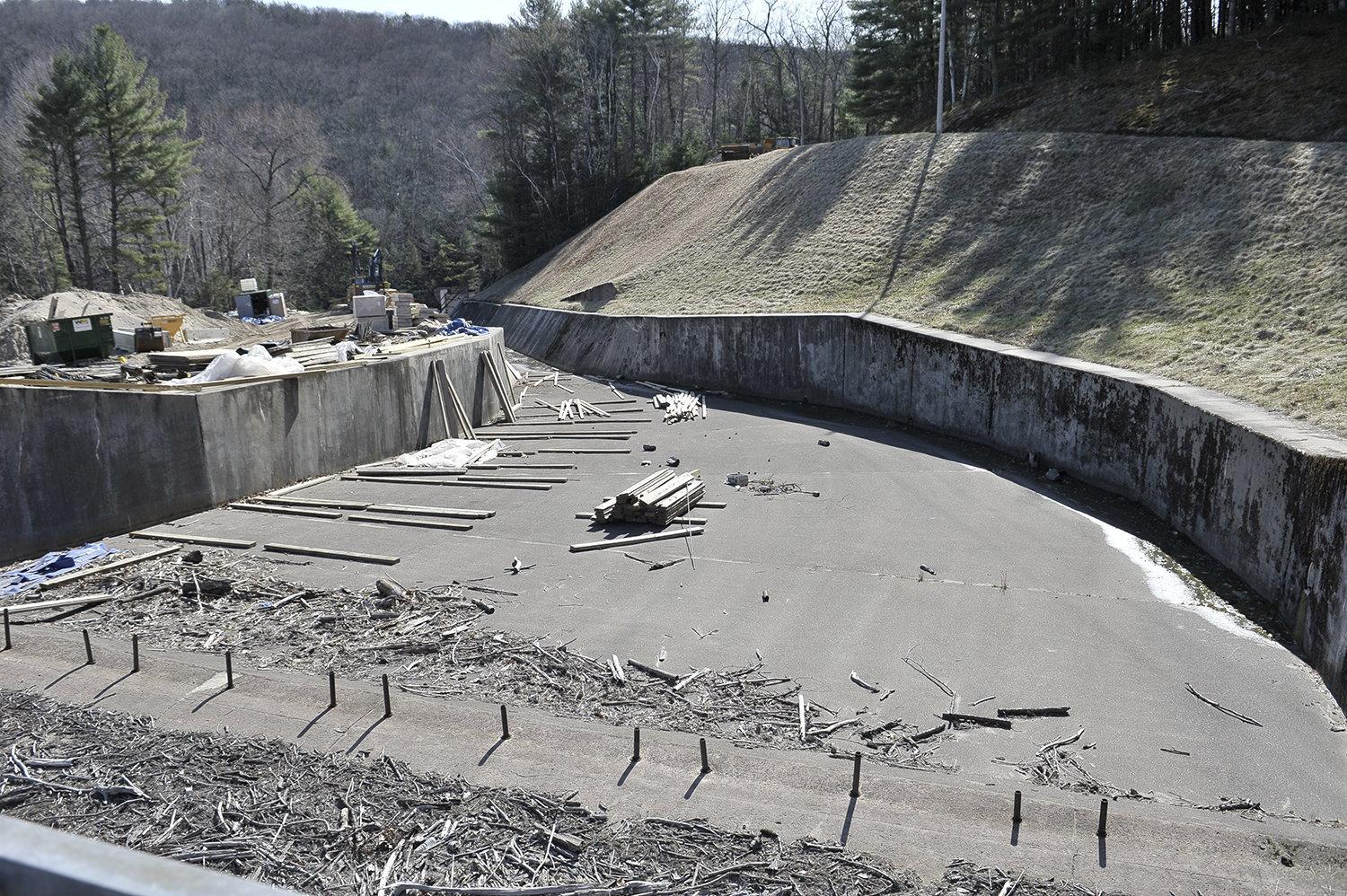WESTFIELD – Water Resource Department officials are planning to recommission the city’s water treatment plant, located in Southwick, in early January.
Water Superintendent Dave Billips said Wednesday that the Granville Reservoir is full and will now be able to provide about four millions gallons a day of drinking water to city residents. Granville Reservoir holds 600 million gallons of water.
The reservoir and treatment plant were taken out of service while repairs and improvements were made to the reservoir dam, an earthen structure built in 1929, and spillway, damaged during Tropical Storm Irene, and upgrades made to the raw water transmission line between the reservoir and the treatment plant on Sackett Road.
The City Council approved a $3.75 million bond in June of 2013 to make repairs to the Granville Reservoir spillway which was washed out during Irene and to make repairs to the earthen dam, built in 1929, which created the reservoir, the city’s primary source of surface water.
Irene dumped so much rain in such a short period that it caused the reservoir to overflow into the dam spillway, filling that concrete structure to capacity and eventually washing away soil behind the concrete that supported the spillway wall, which collapsed.
The overflow torrent then washed away a hillside and nearly exposed the raw-water transmission line, which carries reservoir water to the city’s primary treatment plan in Southwick. If that line had been damaged, the city would have lost half of its water supply.
Billips said the repairs and improvements to the city’s surface water system cost between $6 and $7 million dollars, although the Federal Emergency Management Agency (FEMA) and the Massachusetts Emergency Management Agency (MEMA) will reimburse the city $800,000 for the storm-related damage.
“We plan to recommission the treatment plant on Jan. 5. Restarting the plant and new turbine should take a couple of months,” Billips said.
The recommissioning process will be done very deliberately as officials and engineering consultants observe and assess each element of the rehabilitated system and plant.
“The plant is designed to treat four million gallons of water a day, but the old transmission line was only able to deliver three million gallons to the plant for treatment,” Billips said. “Now with those improvements we can get four million gallons a day to it.”
The city has relied on well water while the reservoir and treatment plant were offline while the repairs and improvements were done. Typically the city’s water demand is divided equally between the two systems. The current improvements to the raw water transmission main will increase flow from the reservoir to the treatment plant by 1 to 1.5 million gallons a day.
The raw water transmission project replaced a 14-inch pipe, originally installed in 1890, with a 16-inch high-density plastic pipe to transport water from the reservoir to the treatment plant. That work was financed through a federal low-interest loan.
The treatment plant also injects chlorine into the water distribution system which inhibits bacterial growth, particularly in long dead-end pipes where water tends to not steadily move, an environment conducive to bacteria growth.
The Water Commission had placed a water restriction ban on outdoor use the past two summers, while the Granville Reservoir system was offline for those repairs, to reduce water demand.
“Some wells have been running nonstop, especially during periods of high demand,” Billips said.
“The wells were the only drinking water source we’ve had while the work was being done, a very expensive water source because we’ve been using a lot of electricity to pump water out of the aquifers,” Billips said. “The surface water system is much cheaper to operate because it’s a gravity-fed system, and now with the new turbines (installed in the plant during the upgrade) our electrical costs will be greatly reduced.”


